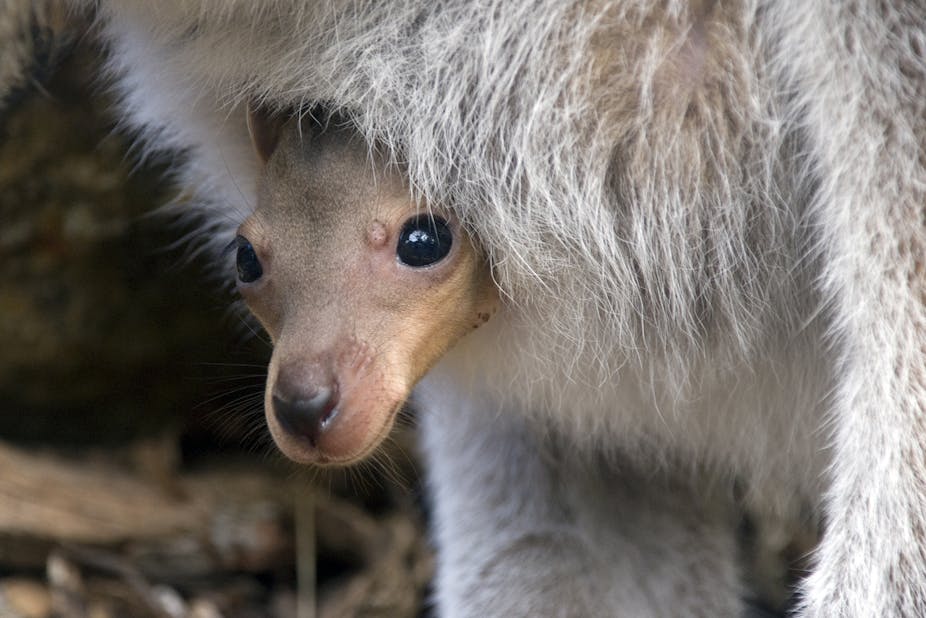We know, because it’s big news, that drug-resistant infections are on the rise globally. But could Australian mammals hold the key to a fightback?
Our current crop of antibiotics is in danger of becoming ineffective as bacteria adapt and change to resist them. Naturally occurring antibiotics may be the solution for urgently needed novel drugs.
Marsupials and monotremes (platypus and echidnas) are ideal potential sources of new antimicrobials – substances that kill harmful microorganisms such as bacteria or fungi.
Our research, published last week, shows molecules from wallaby and platypus young are highly effective at killing a range of bugs.
Early starters
Marsupials and monotremes give birth to highly underdeveloped young compared with humans and other types of mammals.

Their developmental stage at birth is the same as a 40-day-old human embryo. In the tammar wallaby, the young remains in the pouch for about ten months as their immune system matures. During this time, the mother’s milk changes to suit the young’s needs.
Unlike in other mammals, whose immune systems develop in the clean confines of a mother’s uterus, marsupial and monotreme immune systems develop in the presence of a wide range of bacteria, virus and fungi in the pouch, or in the burrow in the case of monotremes.
Antimicrobials play a crucial role in the protection of human young, and are found in human milk. It is likely these molecules also have an important role in protecting marsupial and monotreme young.
Superbug killer
We used the recently sequenced genomes of the Australian tammar wallaby and platypus to discover novel antimicrobials.
We identified 14 cathelicidin genes in the tammar wallaby genome and eight in the platypus genome.
The research involved testing 19 multidrug-resistant microorganisms that are resistant to at least three antibiotics.
One wallaby antimicrobial in particular is very potent in fighting multidrug-resistant bacteria, including Pseudomonas aeruginosa, Klebsiella pneumoniae and Acinetobacter baumannii – superbugs found in hospitals which are dangerous and even life-threatening to people with compromised immune systems.
This peptide, WAM1, is between three and 80 times more effective in fighting each of these microbes than antibiotics such as ampicillin, tetracycline and chloramphenicol.
WAM1 is also resistant to high salt concentrations. The loss of function that accompanies high salt concentration is a problem that often prevents the use of antimicrobial peptides as drugs.
Most importantly, WAM1 is not toxic to human red blood cells.
These results suggest that WAM1 may be suitable for therapeutic research.
Ancient molecules
We have also developed a strategy using computers and synthetic biology to discover new antimicrobial sequences.
Using this strategy, we predicted and synthesised an ancestral molecule that originated around 59 million years ago and gave rise to modern-day wallaby antimicrobials.
This peptide was similarly potent and is particularly effective against mastitis bacteria, which infects the breast or mammary tissue, suggesting they were used to protect mammary glands.
The work goes beyond simply highlighting the potential of Australian mammals as an untapped source of novel therapeutics.
It’s now conceivable that antimicrobials protecting newborn wallabies will one day protect the rest of us from emerging superbugs.

